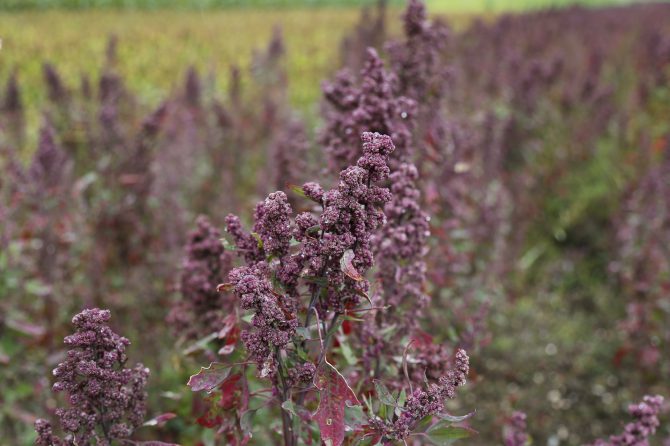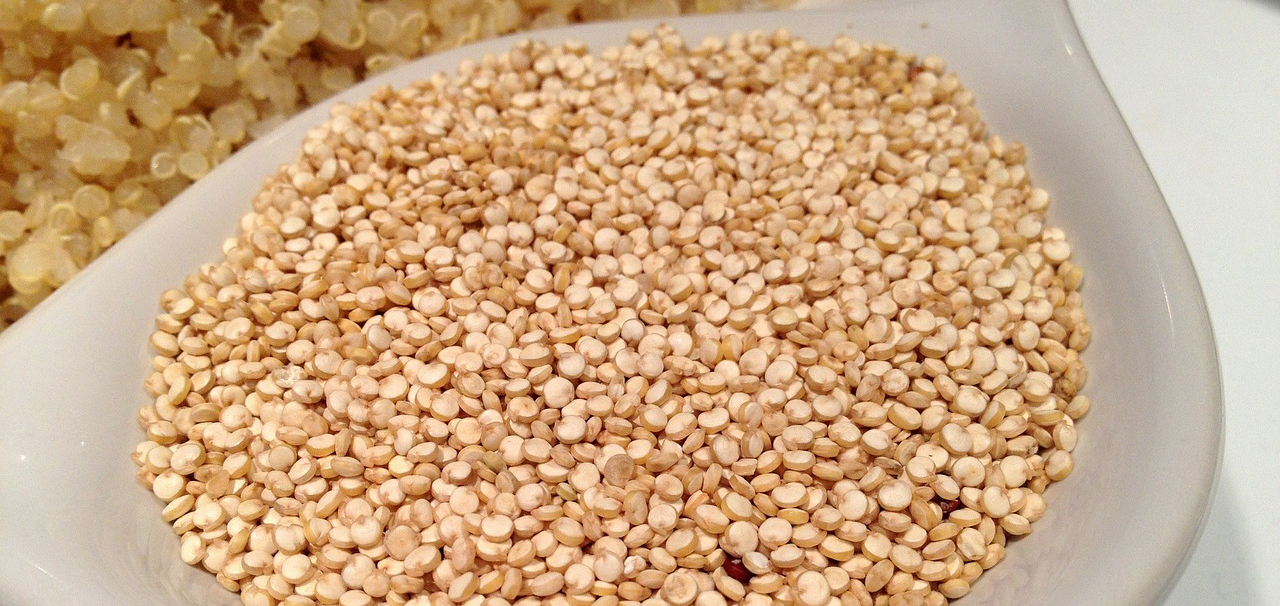
Quinoa is an ancient grain first cultivated in Peru. It’s rich in B vitamins, folate, calcium, magnesium, iron, phosphorus, zinc and fiber and is especially high in vitamin E. Look for tan, red, brown and black varieties. Darker colors have richer, stronger flavors.
Discovering the Ancient Grain, Quinoa
Most people think of grains as carbohydrates, but this ancient grain, quinoa (pronounced KEEN wah) is both a carbohydrate and a complete protein. This means the grain contains all nine essential amino acids we need to build and repair proteins in our body. The Incas fed this ancient grain to their warriors for stamina and long life. It was so sacred, the emperor himself would sow the season’s first seeds.
Today, quinoa is just gaining popularity. This is a small grain with big health benefits. Not only can this grain substitute for meat in recipes, but it has more calcium than two cups of milk and magnesium to help you absorb it. It is rich in B vitamins that help with energy metabolism and is one of the best grain sources of vitamin E to protect your skin and brain.
Quinoa has been found to contain higher levels of antioxidants than other grains and a small amount of healthy omega 3 fats. It is wheat and gluten-free so it is safe for those on special gluten-free diets. Because it is so high in protein and fiber, this grain has a low glycemic index, making it a good choice for diabetic and pre-diabetic diets. The high soluble fiber content also helps to lower cholesterol reducing the risk for heart attack and stroke.
Intact grains (those that have not been ground into flour) like quinoa have natural compounds produced by the planta that resist insect pests and microbes, called saponins. Although these may help lower cholesterol, they can also make the grain taste bitter. It is recommended that quinoa be rinsed before cooking and some commercial brands found in most grocery stores and markets do the rinsing for you.
Quinoa comes in tan, red, brown and black varieties. The darker colors have richer, stronger flavors. Tan quinoa has a mild, nutty flavor that mixes well with most recipes. Darker varieties work well for cold salads or hearty soups. Because of its oil content, store quinoa grains in the refrigerator or freezer.
Cooking is easy. Just add 1 cup quinoa to 2 cups water or broth and bring to a boil. Reduce heat and simmer 15 minutes. When cooked properly, you will see small “tails” emerge from the grain. This grain is great for use in soups. Just toss quinoa in the soup broth and add potatoes or other vegetables, even pasta. Veggies will be soft by the time the quinoa is cooked.
Increase your intake of 100% whole intact grains by adding quinoa to your meal planning. Substitute quinoa for rice in soups or as side dishes to bump up your protein and fiber.

Curry Quinoa Recipe
Sauté 1/2 onion, diced, in oil in a skillet 4-5 minutes until soft.
Add 1 cup rinsed quinoa, 1 tsp cinnamon, and 1 Tbsp curry powder and cook 1 minute.
Add 1 3/4 cup water or broth and bring to boil. Cover and reduce heat to low, simmer 15 minutes. Right before serving, stir in one package frozen peas. Cover and cook until peas are tender.
PDF recipe download includes shopping and cooking notes, Curry Quinoa and Quinoa Coconut Bars recipes.
“Discovering the Ancient Grain, Quinoa” article by Stephanie Polizzi, MPH, RDN. Recipe and fact sheet provided by Oregon State University Extension Service with Healthy Bytes Community Networking Initiative.
You may also like our blog posts with cranberry and beet recipes.
Leave a reply
